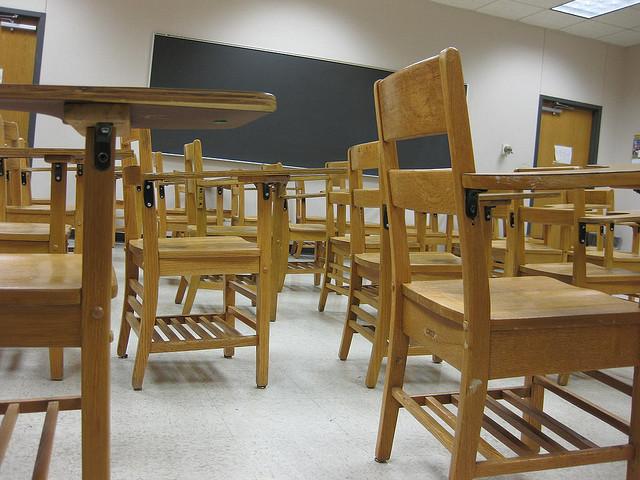University of Wisconsin’s School of Education is stepping in to reverse ballooning student-teacher ratio and a steep decline of educators in the state.
According to a Wisconsin Budget Project report, nearly 3,000 public school teachers left their jobs within the past nine years in the state. Meanwhile, student recruitment continues to rise, resulting in a student-to-teacher ratio that is growing faster than the national average, said Tamarine Cornelius, an analyst at the Wisconsin Budget Project.
More students per teacher can result in crowded classrooms, less individualized attention and lower quality of education, according to the report.
Some educators at UW are worried about the potential impact the decline of teachers has on higher education. Peter Goff, assistant professor in UW’s educational leadership and policy analysis department, shared his concern that future teachers would be discouraged by the current trend.
“People who are anticipating careers in education are now changing their mind[s],” Goff said. “That has an impact on the quality of teachers that will be joining the classroom in subsequent years.”
A practical reason teachers are leaving classrooms is the long-term decline in school spending. The report shows in 2005, Wisconsin’s schools ranked at 13 for most spending in the nation. But by 2013, its rank dropped to 21.
Wisconsin public schools also lack experienced teachers, which contributes to a decline in retention. Teaching staff with more than 15 years of experience declined by almost 20 percent between 2004 and 2013, according to the report.
Diana Hess, dean of UW’s Department of Curriculum and Instruction said the problem is not the state hiring inexperienced teachers, but the churn of teaching staff with few years of experience in the system. Many people are not staying in the teaching profession long enough to be skilled at it, she said, because they feel they lack proper incentives. Therefore, educators suggest the state focus on making teaching an attractive and rewarding profession again.
“Teachers are more likely to stay in schools where they feel like their work is being supported,” Hess said. “Part of the solution to this problem has to do with making sure that we get really strong principals and other leaders in schools.”
To help mitigate the loss of quality teachers, UW’s School of Education is launching a program to help students earn a one-year teaching certificate after graduation. Hess said fewer people enter Bachelor of Arts’ programs for teaching in their undergraduate years, but the number of graduate students that go into teaching remains steady.
The new program aims to help students who only decide to focus on teaching later in their undergraduate years quickly join the profession.
Hess also pointed out efforts the School of Education makes to support teachers already in classrooms, including professional development programs. She said the school created a new program for teachers who are in their first years with Madison Metropolitan School District, designed to make those teachers want to keep teaching.
Beyond cultivating teachers, the UW School of Education is also joining forces with a national movement to establish better evaluation systems for teachers and principals, said Bradley Carl, a researcher at Wisconsin Center for Education Research.
“I know schools of [education], including here at UW, are making [a] concerted effort to have teachers be better prepared than they were in the past,” Carl said.














